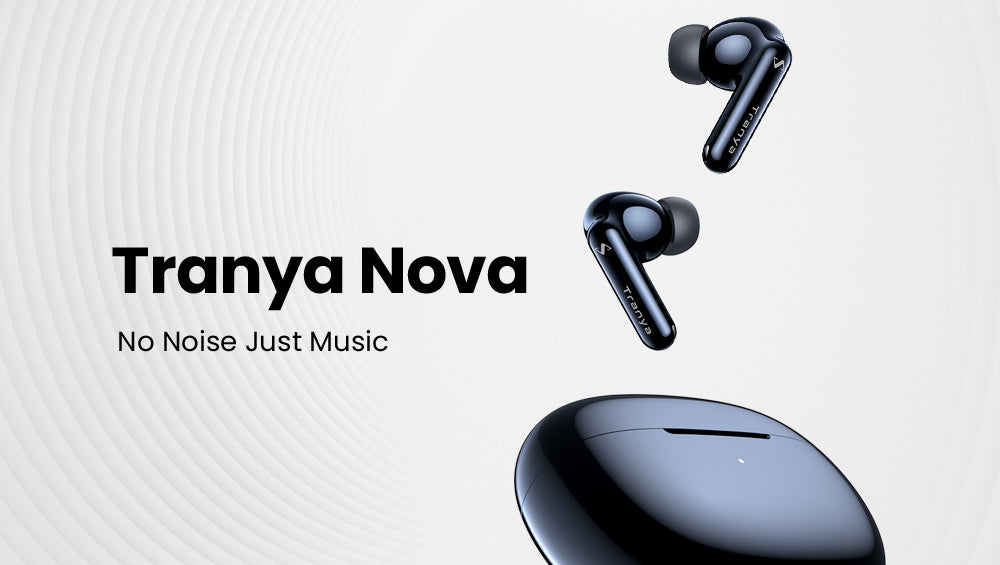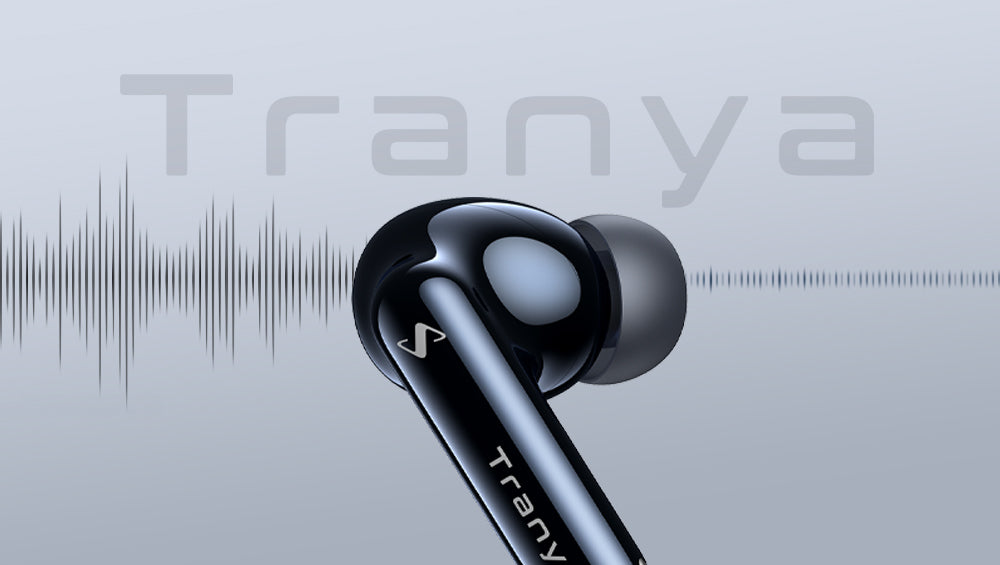In a world where audio quality, comfort, and convenience are paramount, the search for your ideal earbuds shouldn't be a shot in the dark! From several body designs and connectivity options to high durability and long-lasting battery life, there’s a lot to consider when you are on the hunt for a new pair of earbuds.
As such, we totally understand if you find yourself lost in the sea of options available. Are you looking for a new pair of earbuds but don’t know where to start? Then this article is for you! In this article, we provide you with a detailed guide on how to choose the best earbuds for your ears.
Now, without further ado, let’s begin!
How to Choose the Best Earbuds for Your Ears
Weight
No matter how well they fit in your ears, how long the battery lasts, and how durable they are, all will be next to useless if the earbuds you are wearing are not comfortable in your ears.
Therefore, when it comes to finding the best earbuds for your ears, comfortability always tops our charts. This is because comfortable earbuds put no strain on your ears and you get to enjoy your favorite playlists for extended sessions without ever getting tired or feeling the need to take breaks between sessions.
The comfortability of an earbud lies in its overall weight. Before buying, always try out the earbuds with different weights and see which your ears are most comfortable with. Generally, the lesser the weight, the more comfortable you are. However, that’s not true for everyone. You will indeed find people who see weighty earbuds as the perfect fit for them.
Fitting

Besides comfortability, the fitting of ear tips is yet another important factor to consider when choosing the best earbuds for your ears. This is because different ears have differently-shaped ear canals and hence differently-shaped ear tips fit in differently in each individual’s ear.
As of now, silicone and foam ear tips are the 2 most popular options. In practical terms, given their intended purpose, both these ear tips cater perfectly to the needs of an average user. All that you need to do is figure out what you'll be doing with earbuds on and what ear tips' shape adjusts with your ear canal optimally.
For instance, if you will be mostly jogging while wearing earbuds, then silicon ear tips will be better suited for you as they do not absorb sweat, are made of inert material, and also keep you aware of your surroundings by providing little noise isolation.
Moreover, a good earbud fitting also ensures that they do not randomly pop out and fall from your ears, potentially breaking the body or causing damage to any inside component.
Durability
As a general rule of thumb, earbuds that are built to last should be your go-to earbuds. Regardless of all the precautionary measures we take, humans are bound to make mistakes. Time after time, earbuds may fall out of one’s ears or may even slip from hands while trying to fit them.
And because you do not want to have earbuds that get broken down every time they fall or take a hit, durable earbuds built out of sturdy materials should be preferred; especially if you value your hard-earned money and don’t want to replace them every time they get damaged.
Design

The earbud design refers to its build shape and size; and is a very crucial factor to consider when buying the best earbuds for your ears. Because our ears are shaped differently, different people will prefer different earbud designs as per their ears shape.
Currently, there are in-ear, on-ear, and over-ear earbuds. In-ear earbuds are the most compact and provide the best noise isolation but can be too invasive sometimes. Over-ear earbuds, on the other hand, provide the best sound quality but can be too bulky for some users. As for the on-ear earbuds, they lie in between the in-ear and over-ear earbud designs and offer the best of both worlds.
Connectivity
As glimpsed above, knowing how you will be using your earbuds is another important factor to consider when buying the best earbuds for your ears. This is because your earbud connectivity and your earbud usage merge together to influence your day-to-day listening experience.
As such, we have wired, wireless (neckband), and true wireless earbuds. Wired earbuds are your very traditional types of earbuds and need no introduction. They are fast, reliable, offer the best sound quality, and also come cheap.
Neckband wireless earbuds, on the other hand, are wireless earbuds in the sense that they do not require a cable connection with the source device but are connected with a cable to each other. While they offer more mobility than wired earbuds, neckband wireless earbuds are battery-dependent and expensive. Lastly, truly wireless earbuds are everything that neckband wireless earbuds are except for the fact that both the earbuds are wirelessly connected with each other instead of a cable.
Battery Life

Continuing with the flow, we now shift our attention to the battery lives of earbuds. Regardless of what top brand earbuds you purchase, they won’t be the best earbuds for your ears if they don’t give you long-lasting battery time.
Before you buy a pair of earbuds, you should have a clear idea of how long you will be away from your power source since knowing this will help you make an informed decision.
Wired earbuds require no battery power since they are powered by the device they are connected with. However, both the Neckband and True wireless earbuds consume battery power; with the latter consuming more power.
Resistance
Earbud resistance refers to how well the earbuds can resist damage or degradation from external factors such as water and dust.
Sometimes we find ourselves in unpleasant situations while wearing earbuds. Maybe it started to rain while you were jogging, or maybe you left out your earbuds on the terrace while it was windy and dust accumulated, or even that earbuds accidentally slipped out of your hands and took a neat dive down to the floor.
Although nothing is 100% guaranteed, top-tier earbuds offer in-built water, dust, and even shock resistances that significantly lower the chances of getting impacted by the aforementioned hazards.
Therefore, the best earbuds for your ears should be able to protect themselves from these hazards and you must always buy these earbuds if your budget allows.
Active Noise Cancellation

In modern earbuds, Active Noise Cancellation is a very important and much-coveted feature. The next time you are in a shopping mall to buy the best earbuds for your ears, make sure that the earbud you buy has noise cancellation capability at the very least.
As the name suggests, active noise cancellation reduces ambient unwanted sound around us, thus improving the in-ear sound quality as well as the overall listening experience.
Although passive noise cancellation is achieved by particular earbud designs and foam ear tips, active noise cancellation hypes up the game by actively monitoring and accurately eliminating external sound. This technology makes use of an external mic and internal processor to pick up ambient sound, generate opposite waves, and then effectively cancel them out around the user.
However, on the flip side, do note that this feature consumes more battery power and shortens the lifespan of your earbuds if used all the time.
Advanced Factors
Lastly, in case you are a tech nerd, musician, audio enthusiast, or simply keen to learn more, you will soon find out below that there are even further technical factors to consider in order to determine the best earbuds for your ears.
Below are some advanced factors and recommendations for sound experts wanting to get the best audio clarity possible from earbuds:
- Sound Frequency
Human beings can hear sounds as low as 20Hz and as high as 20kHz. As such, all the sound that we hear in our daily lives, including earbuds audio, is a rich cocktail of frequencies from 20Hz to 20kHz.
With that said, let it be clear that not all earphones are capable of accurately producing the sound wave frequencies possible in this range. Some struggle with producing low fine notes while others produce a very distorted, even irritating, high-pitched voice.
Consequently, how clear a sound an earbud produces often comes down to the quality of its inside components. High-end earbuds make use of and integrate state-of-the-art sophisticated electronic sound components that produce super clear high-quality sounds within 20Hz to 20kHz as well as even less and more outside this interval.
However, the majority of earbuds you see will have frequency values other than the one stated here. Therefore, you need to check them and see whether they are useful for you or not.
- Sensitivity
Earbud Sensitivity relates to its ability to respond quickly it responds to changes in its electrical power. As such, a highly sensitive earbud will produce a louder sound for a given power than its low-sensitive counterpart.
In this scenario, the best earbud for your ears is the one that sits somewhere in the middle. In other words, the sensitivity of an ideal earbud should be medium.
Since louder sounds will damage the ear while lower sounds can render themselves inaudible, a mid-sensitive earbud will produce the just right sound amplitude for you: around 85 decibels.
- Diaphragm
The diaphragm is that component of an earbud that directly impacts that earbud’s overall sound quality. You can think of it as a very thin sheet that vibrates inside the earbud to produce sound when given an electric charge.
A larger diaphragm produces higher-quality sounds but also increases the earbud’s size. The converse is true for smaller diaphragms. However, the diaphragm size is not all that matters. The build quality also determines the quality of sound you hear from an earbud.
Presently, there are plastic, metallic, and ceramic diaphragms. Plastic diaphragms are best for clear and detailed mid and high-frequency sounds while metallic diaphragms are the go-to option if you prefer depth and power in bass sounds, Ceramic diaphragms, on the other hand, produce the most fine and accurate sound frequencies in the interval 20Hz – 20kHz.
Now, based on your sound quality preferences, you can go with any of these earbud diaphragm components.
Final Thoughts

As seen above, there are tons of factors to consider before buying the best earbuds for your ears. This list is only the tip of the iceberg.
Also, just to let you know, Tranya T50 fits all of the requirements above. We strongly suggest you check it out if you want to strike the perfect balance between performance and budget.
Anyway, did this article prove helpful to you? If yes, then how? Share your thoughts with us and let us know in the comments below!



